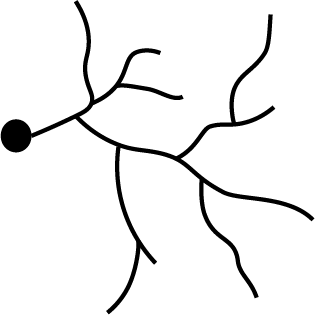

Five purple clay sculptures - Thalacora (2025), Ammonora (2025), Xurthra (2025), Siphonura (2025), and Gorgospina (2025) - are finished with various glazes to emulate earthy matters. Fused together the forms of microorganisms, prehistoric fossils, and mythological totems from different cultures, these hybridized works at once recall creatures from science fictions and ritual artifacts excavated from an ancient temple.
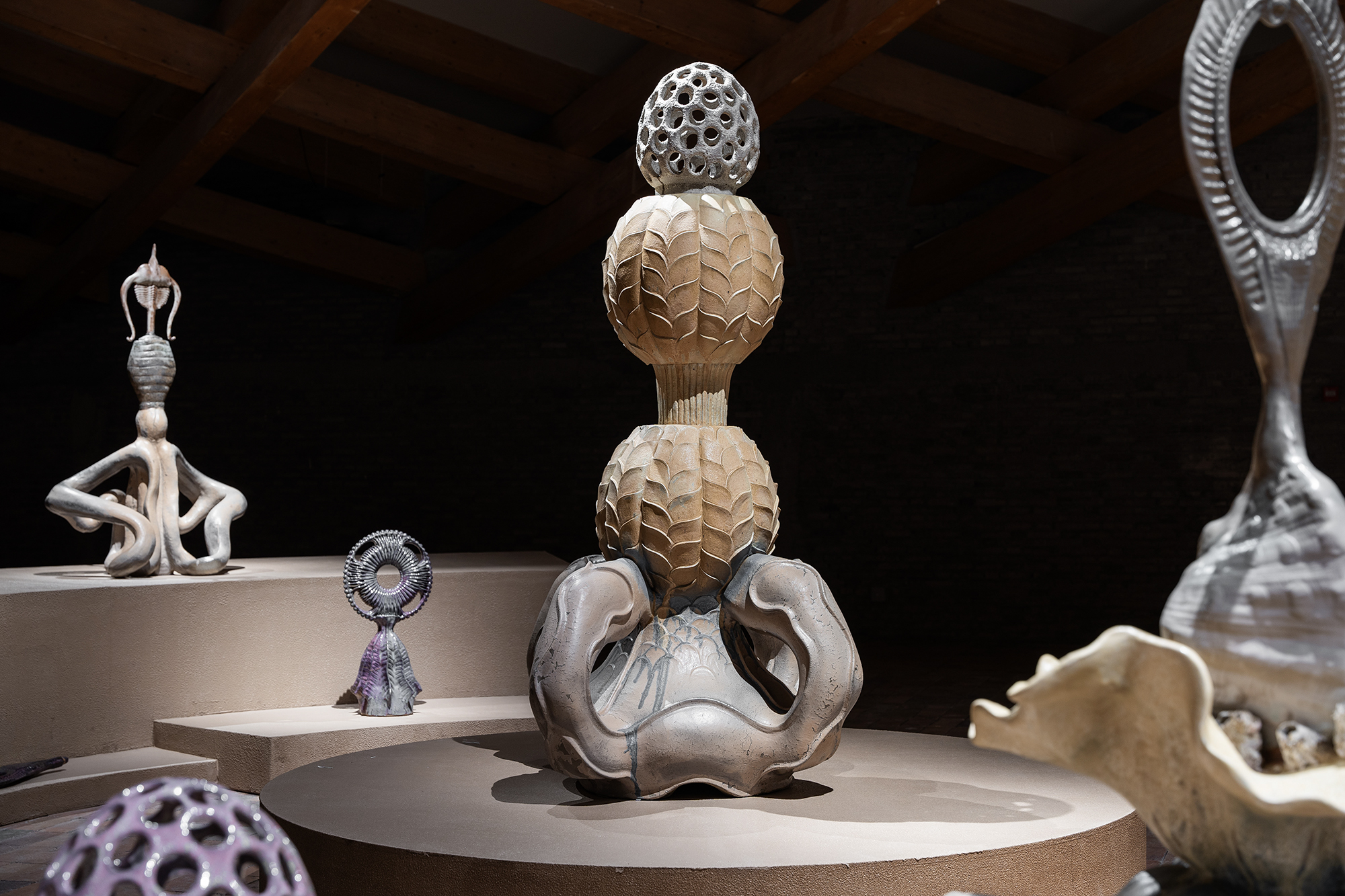
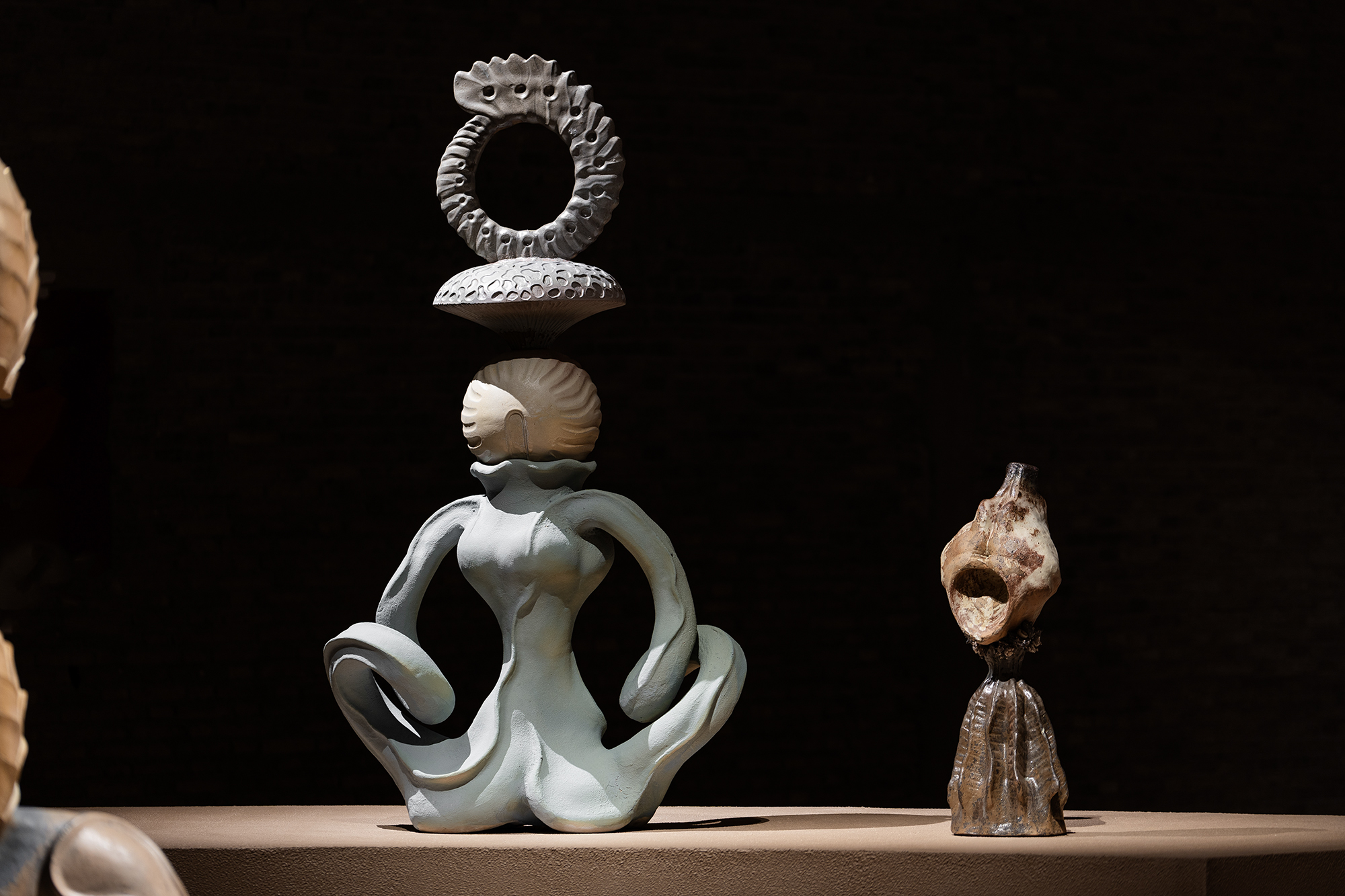

Scattered around the sculptures is Land of Discontinuity (2025), a set of 12 clay tablets; the patterns shown in relief ambiguously suggest both magnified views of microorganism and small sections of much larger lifeforms. Here, the artist has constructed an archaeological site detached from temporality and geography, in which concepts of linear time or evolution no longer apply.
This installation speaks to Cao’s longstanding interest in archaeology as a portal of resonance across time and space: Noting how ancient peoples once interpreted fossils as mythical remains, she ponders whether advances in sciences and techno-culture might be paving the way toward a future increasingly devoid of wonder, imagination, and unknown.
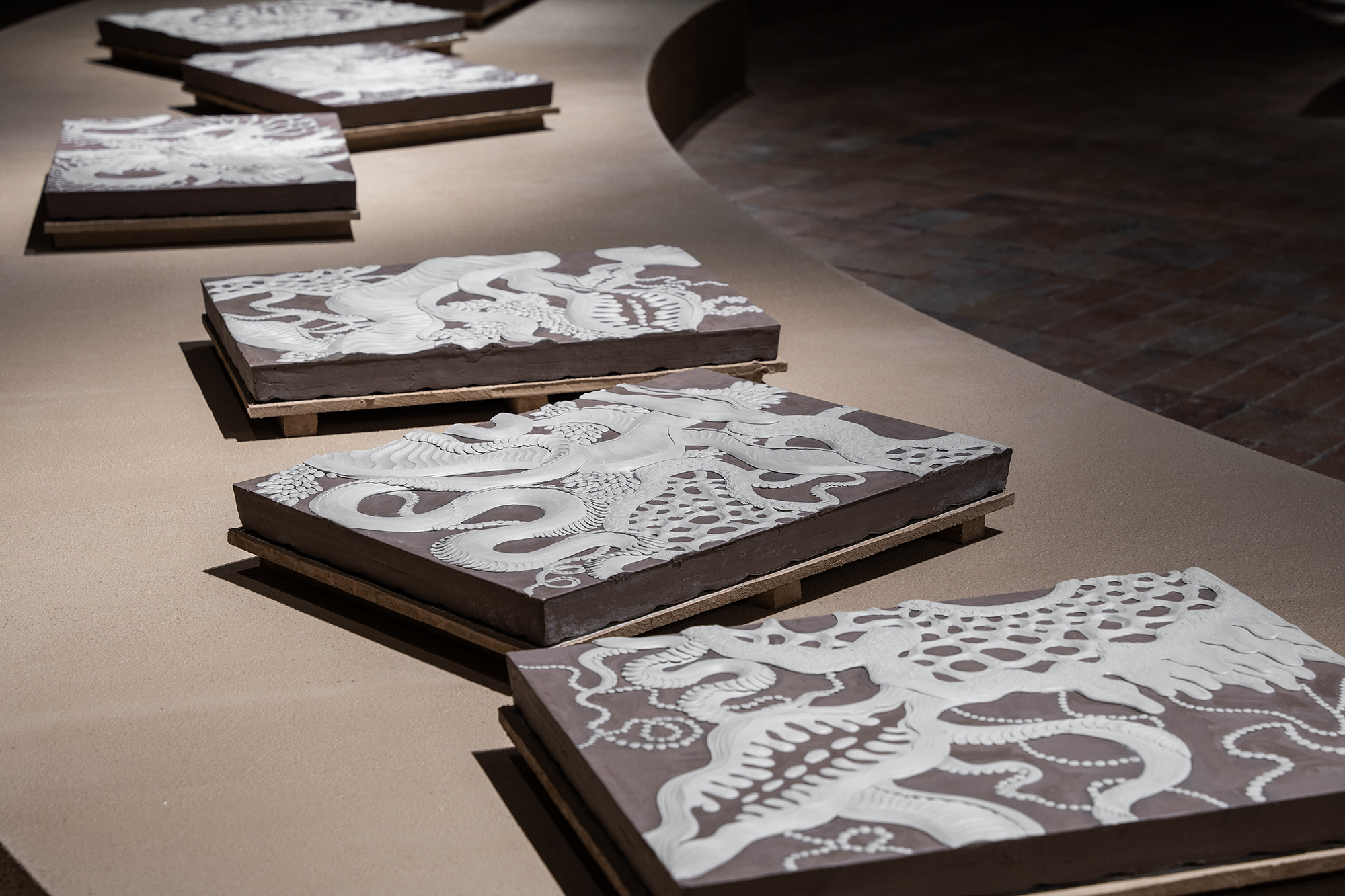

The Tiffany stained glass works Institute of the Sun #1 (2025) and Institute of the Sun #2 (2025) respond to Cao’s visit to Institute of the Sun, the world’s second-largest solar-powered furnace, located outside Tashkent, Uzbekistan. Drawing parallels between two different entities that both process solar energy - solar furnaces and green algae - the works explore the themes of grandiose engineering projects and primitive life-forms. They reflect a fascination with the contrast between a vanished superpower’s technological ambitions and the fragility of glass as a material. Inspired by the 19th-century naturalist Ernst Haeckel’s scientific illustrations of the Pediastrum genus of green algae, the artist created stained glass discs encased in metal lattices, with elements aligned in patterns resembling symmetrical microorganisms viewed through the circular eyepiece of a microscope. The algae obliquely depicted here were among the earliest organisms capable of converting sunlight into energy, creating an aerobic environment that allowed for the evolution of complex life forms, including humans.
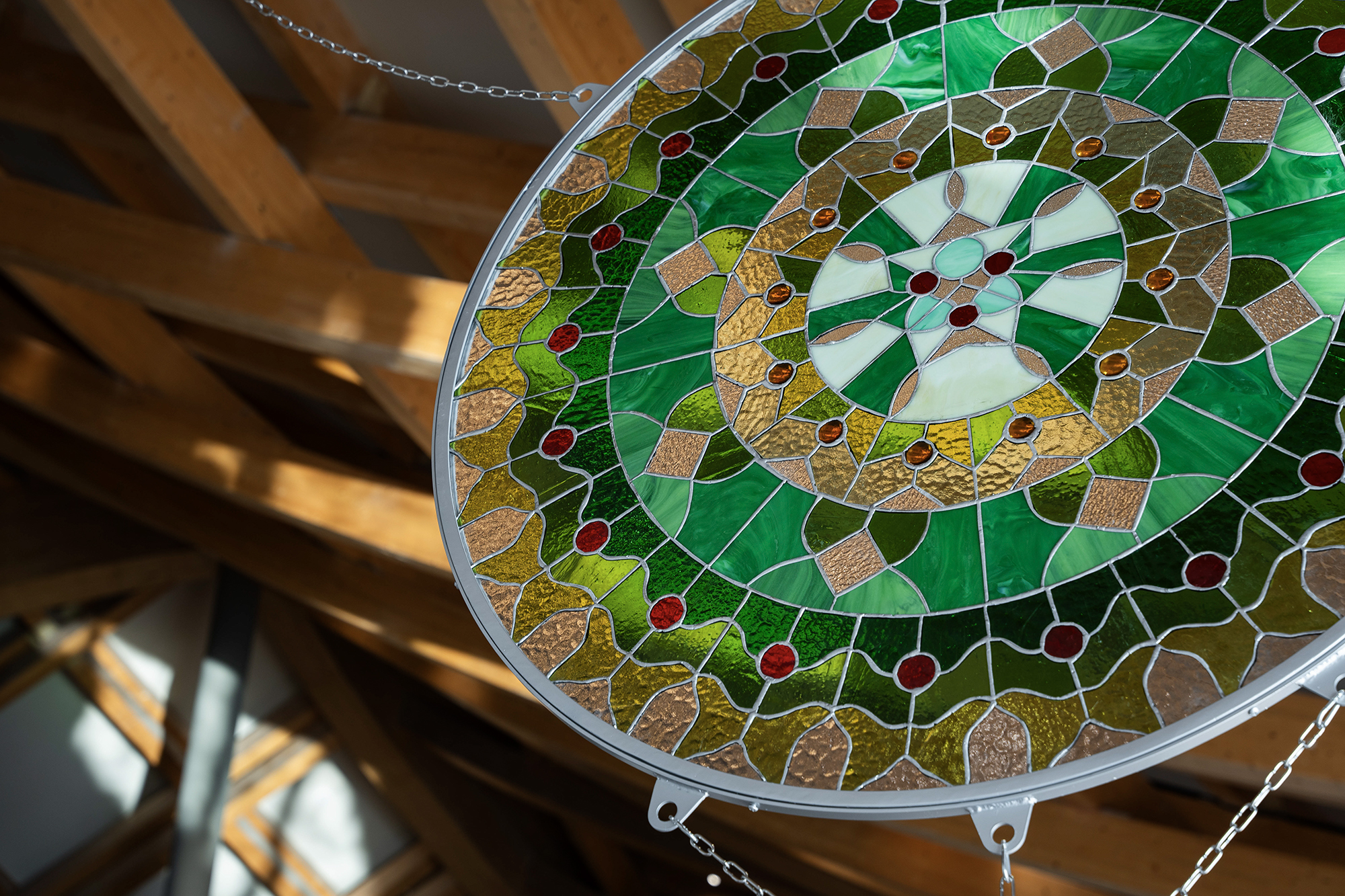

Blurring distinctions between primitive organisms and futuristic technology—which both in their own ways harness solar energy - these works resonate with Cao’s film She from the Sky, which concludes the exhibition by linking the ancient past of the now-disappeared Aral Sea with contemporary energy resources.

Institute of the Sun #2, 2025, Tiffany stained glass, 200 x 100 cm; Institute of the Sun #1, 2025, Tiffany stained glass, 240 x 120 cm
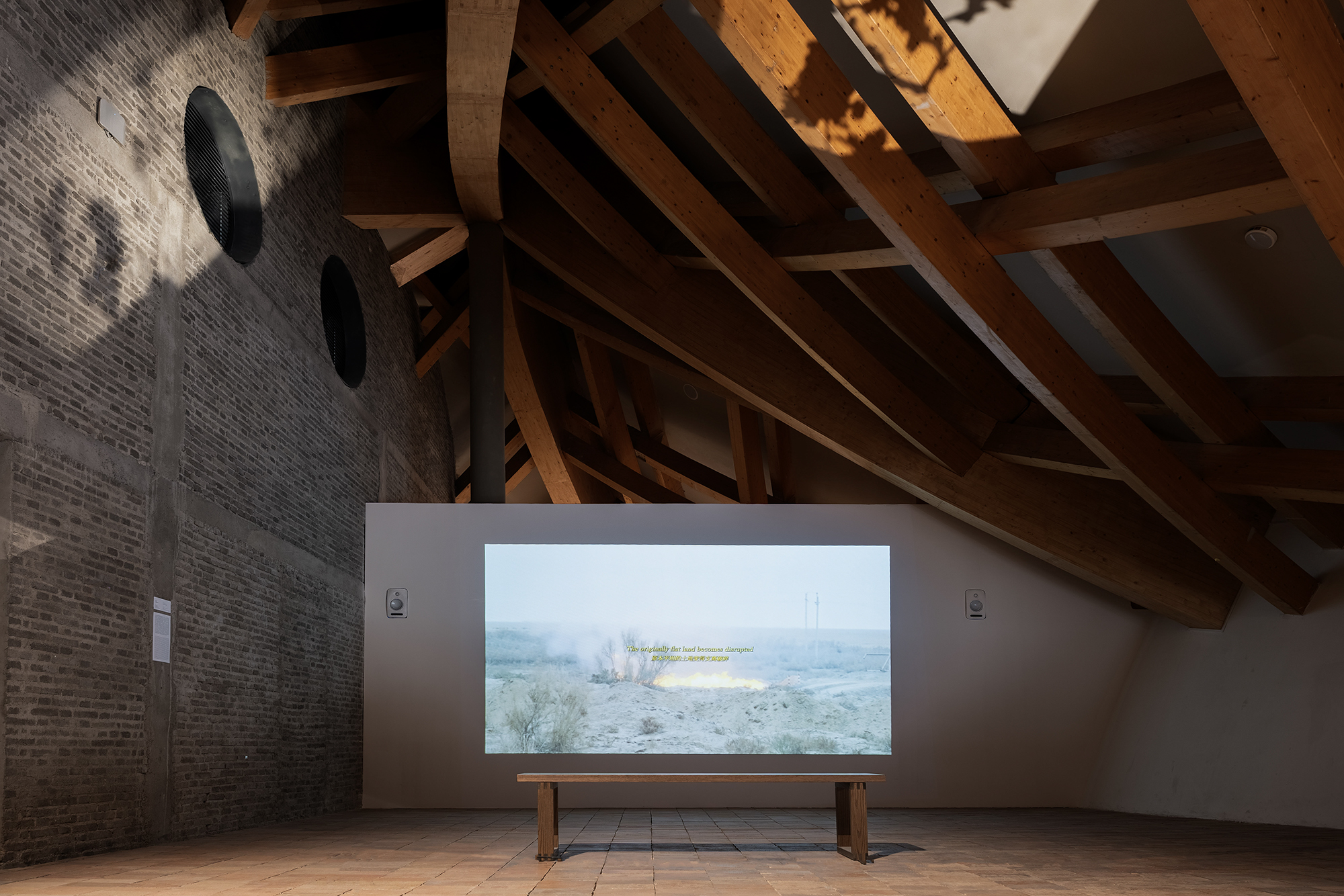

Film still, She From the Sky, 2025, single-channel video with sounds, 33 minutes 52 seconds
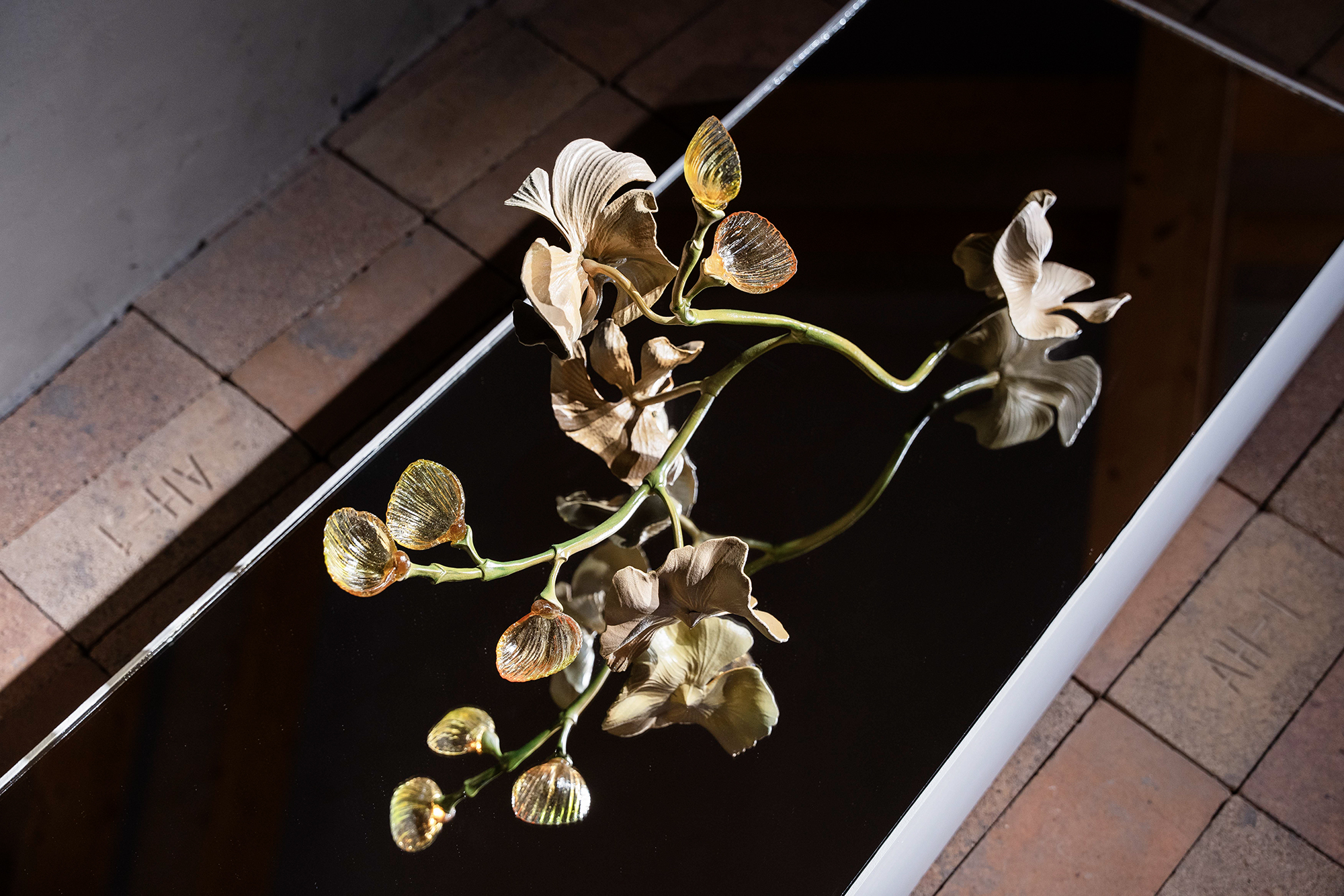

Shellwort, 2025, stainless-steel, glass, 50 x 28.5 x 33 cm
In the video, the artist ventures deep into the desiccated seabed of the Aral Sea, collecting remnants of once-abundant shells from the saline-alkaline desert soil. These long-extinct molluscs are digitally replicated, their forms reimagined in silica glass. In this new incarnation, they appear to grow from the stems of Salsola richteri - a desert plant native to Central Asia. This resilient plant is among the vegetation selected for the “greening the seabed” campaign, referenced by the ecologist in the film. This phantom plant embodies two phantasms: the long-gone past and the not-yet-arrived future.
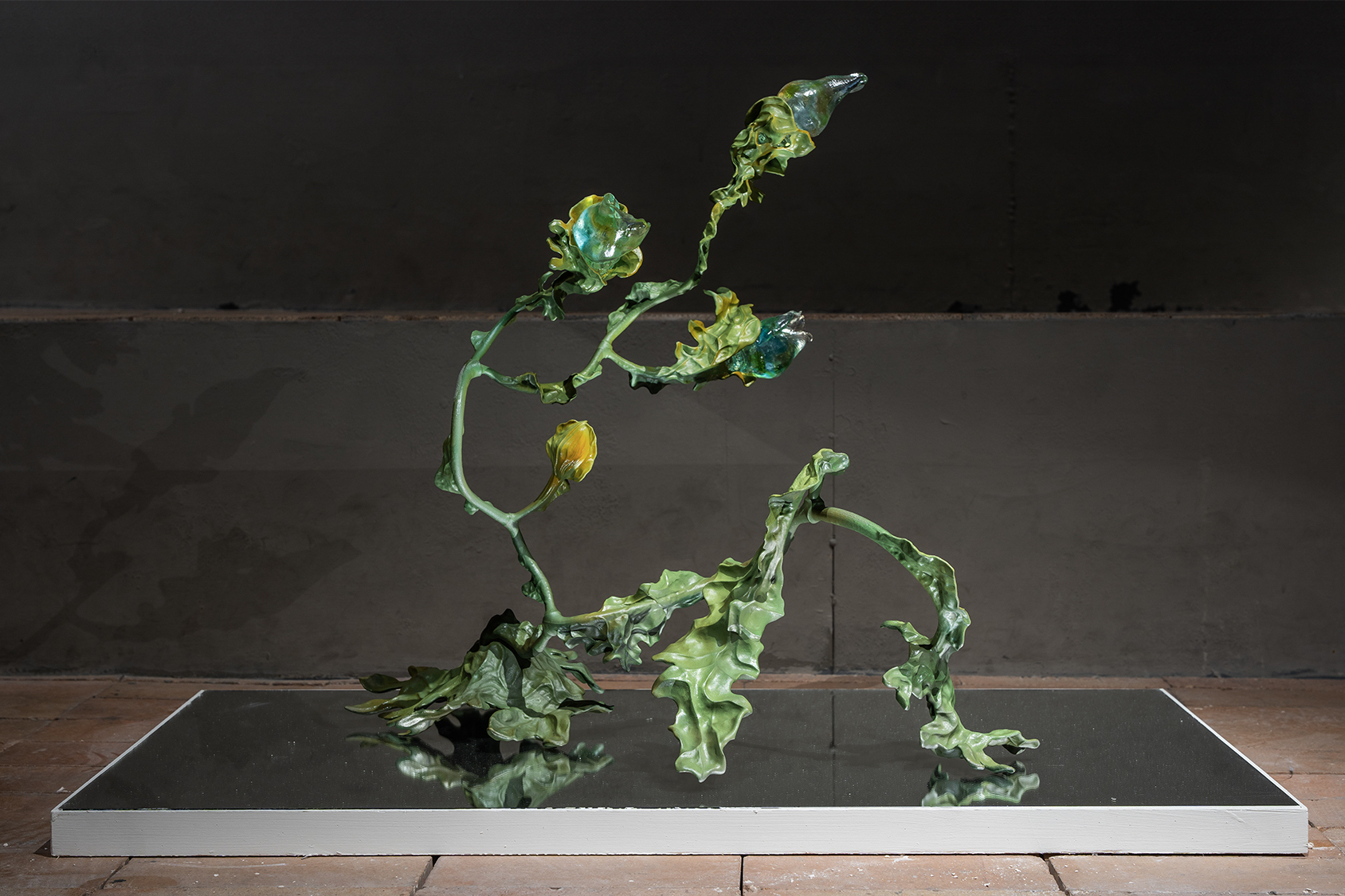
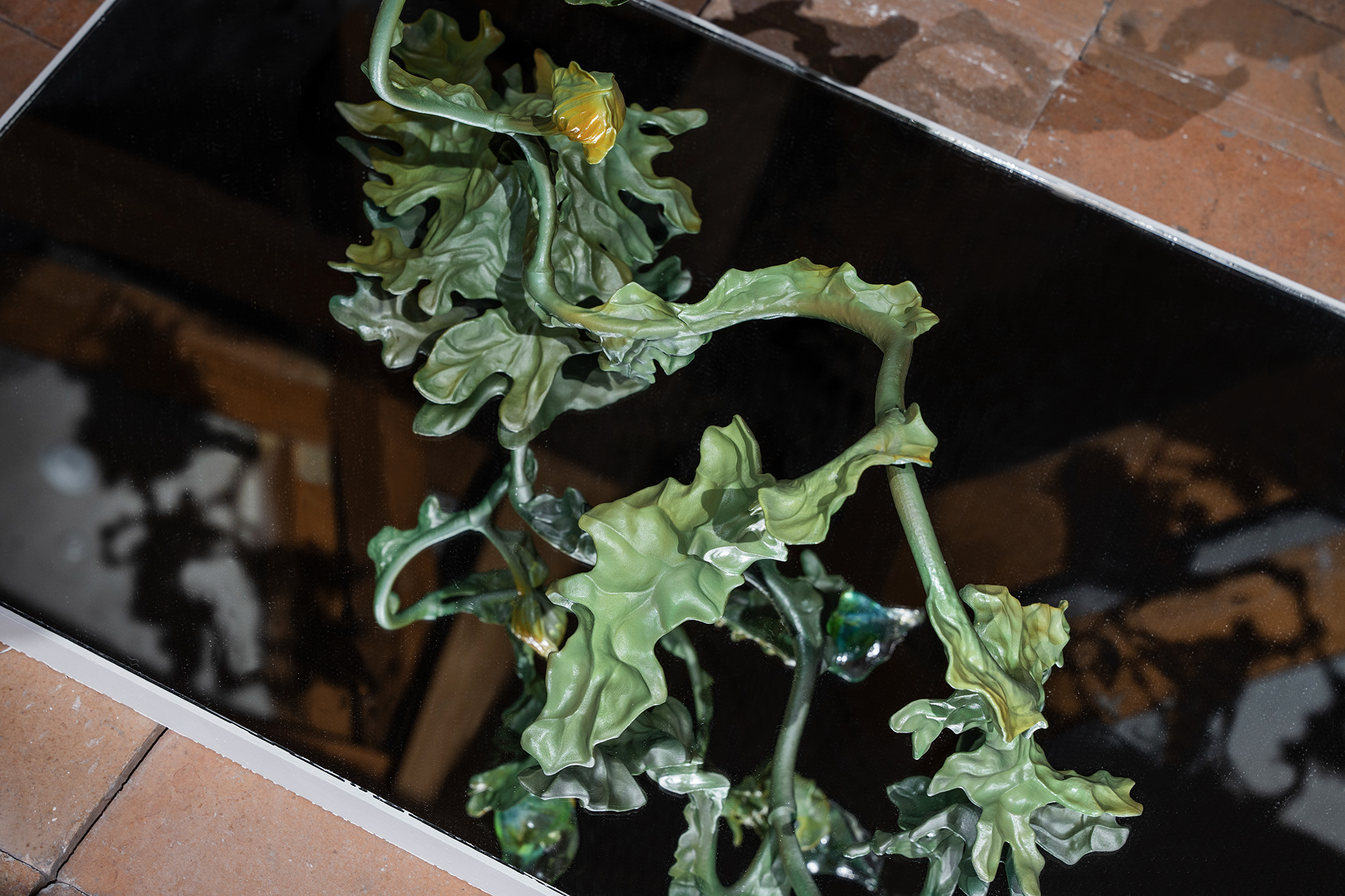 Sea Lung, 2025, stainless steel and glass, 61.5 x 45 x 60 cm
Sea Lung, 2025, stainless steel and glass, 61.5 x 45 x 60 cm
Underwater, on Fire
Duo exhibition (with Candice Lin)
UCCA Clay, China
2025
Underwater, on Fire (2025. 7.5 - 10.12) is a two-person exhibition by Shuyi Cao and Candice Lin featuring new and recent works, including site-specific commissions by UCCA Center for Contemporary Art. Bringing together works in an immersive setting that extends the narrative potential of ceramics beyond an object-based approach of presentation and creation, this exhibition explores the artists’ shared concerns with the entanglements of humanity and the environment, as investigated through themes of transformation—through matter, time, and myth.
Throughout the museum space, Cao constructs installations of a fictional underwater temple based on her study of archaeological practices and the water deities of different cultures, creating an environment suspended between an undefined archaeological site and the underwater crystal palace in Chinese mythology that recalls both pre-modern religious rituals with a distinctly futuristic sensibility. The works on display here have emerged out of Cao’s recent research into different cultures’ water deities and the beliefs surrounding them: at the center of the shrine are five large-scaled sculptures along with fragments of their replicas, inspired by aquatic microorganisms from varied geological eras and marine environments. The artist has enlarged and reconstructed these organisms - normally only visible through a microscope - into mysterious icons.
The exhibition is curated by Shixuan Luan.
